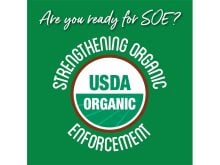REGINA – Bison numbers are rising. Since 1996, the Canadian bison population has risen from 45,000 head to what is expected to be 250,000 by the end of 2007.
Farm size and the number of producers have jumped along with the animal population. Ten years ago there were 745 Canadian farms with bison; today there are 1,900.

Terry Kremeniuk of the Canadian Bison Association (CBA) said the industry is rebuilding from 2003’s BSE border closure and an overheated breeding stock market that collapsed in 2001.
Read Also

U.S. bill could keep out Canadian truckers
The Protecting America’s Roads Act, which was tabled in the U.S. House of Representatives at the beginning of October, would “rid the country of illegal immigrant commercial truck drivers and ineligible foreign nationals.”
“Meat prices went from grade A bison (meat) at $3 a pound to $1.20 in 2002. We are back up towards $2 and things are looking much better in the business,” he said.
Rusty Seedig of Denver, Colorado said the industry on both sides of the border needs to expand rapidly if the meat market is going to be sustainable.
“We are seeing more than $2 for bulls and $1.93 for heifers this week. And prices jumped up for (breeding) animals at the Custer State Park sale,” he said.
Seedig is the chief financial officer of the North American Bison Co-operative packing and marketing organization located in New Rockford, North Dakota.
“Right now the biggest challenge we have will be to get enough new cow-calf producers into the industry to meet the need for meat,” he said.
The Custer State Park annual bison sale took place last weekend with significant increases in prices.
Two-year-old heifers averaged $1,042, up $167 from last year. Yearling heifers sold for $786, up $195, mature cows brought $970, up $245, and two-year-old breeding bulls got an average of $2,122, more than $800 higher than in 2006.
Kremeniuk said the prices reflect a healthy market for meat and the potential for a better North American bison market overall.
“Producers see the demand for bison meat and are responding accordingly to increase their herds,” he said.
At the CBA annual meeting Nov. 18-19, Seedig described the day as momentous because the border is open to breeding stock.
Seedig said the American association has lobbied hard to get the U.S. Department of Agriculture’s inspection service to allow bison to remain on trailers when crossing the border. That, along with elimination of the requirement for pregnancy testing, is reducing costs, animal stress and delays for exports to the U.S.
Canadian slaughter has fallen over the past three years. From August 2004, when the American border reopened to slaughter animals, only 3,800 animals were sent into the U.S.
By 2006, exports jumped to 13,250 and it is estimated that by the end of 2007, more than 18,000 animals will be sent south for slaughter.
At the same time Canadian slaughter has fallen to 24,000 animals.
“Slaughter is up 17 percent this year overall including U.S. exports. Herd size has only increased seven percent. That spells increased prices going forward,” said Kremeniuk.
Seedig said if changes are implemented to the American classification of domestic bison through the new U.S. farm bill, it will further improve market prospects for Canadian slaughter cows in the U.S.
“If we can get bison classified as an amenable species (the same as poultry, beef and pork) and get changes to rules that prevent interstate sales of state-inspected meat, then federal meat processors will be able to grind and process Canadian cows,” he said.
“There is a lot of potential for Canadian bison tied up in that farm bill.”
















